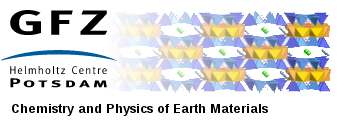 First publication for the TIMEleSS team: Kinetics and detectability of the bridgmanite to post-perovskite transformation in the Earth’s D″ layer.
First publication for the TIMEleSS team: Kinetics and detectability of the bridgmanite to post-perovskite transformation in the Earth’s D″ layer.
Bridgmanite is a magnesian-iron mineral ((Mg,Fe)SiO3) with a crystal structure that is not stable under ambient conditions. It forms about 660 kilometers below the surface of the Earth, and transforms to a new structure at even greater depth, approximately 2700 km depth, just above the Core-Mantle boundary.
During his PhD, C. Langrand, PhD student at the Université de Lille studied the kinetics of such transformation. It is fast on geological timescales: about 10 to 10,000 seconds, depending on pressure and temperature. Thanks to the collaborations in the TIMEleSS project, the authors realized that this includes the timescales of seismic waves. As such, seismic waves can trigger the transformation and, in turn, the transformation can amplify the seismic signal from D” seismic reflections.
These results from a collaboration between the Université de Lille, the université Clermont-Auvergne, the université de Lyon, the Westfälische Wilhelms-Universität, Münster, CNRS, and the PETRA III / DESY synchrotron source were published on 12 decembre 2019 in Nature Communications.
Full reference : C. Langrand, D. Andrault, S. Durand, Z. Konôpková, N. Hilairet, C. Thomas, S. Merkel, Kinetics and detectability of the bridgmanite to post-perovskite transformation in the Earth’s D″ layer, Nature Communications, 10, 5680 (2019) [doi: 10.1038/s41467-019-13482-x].








